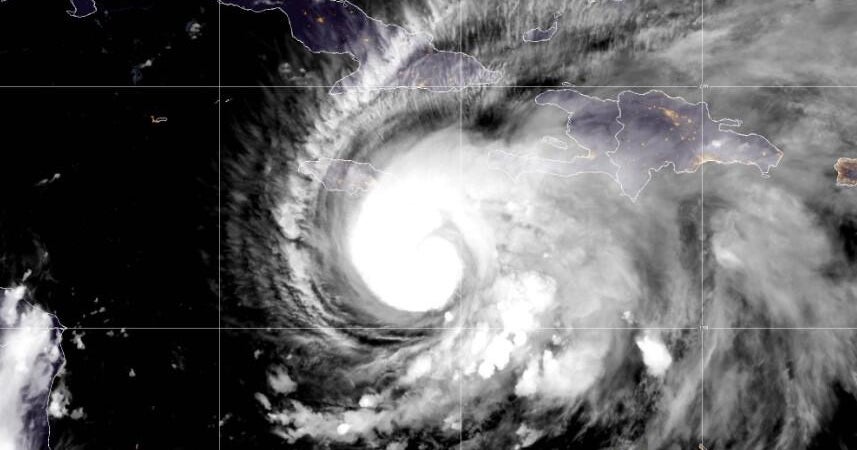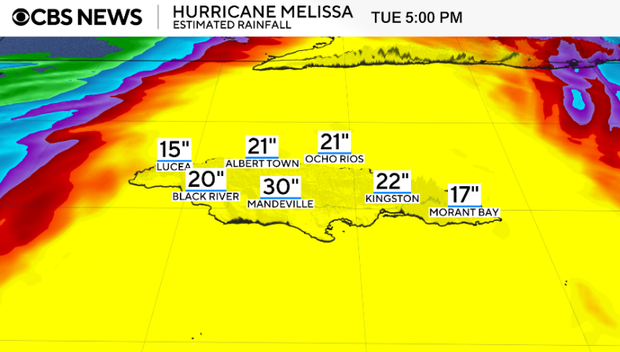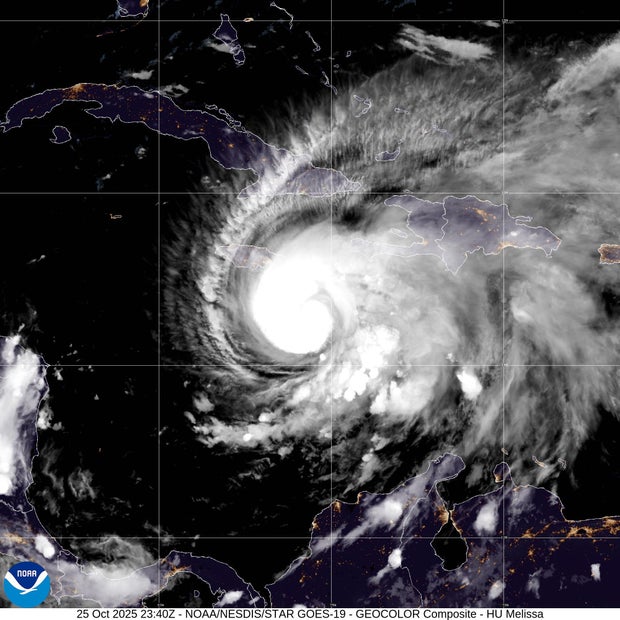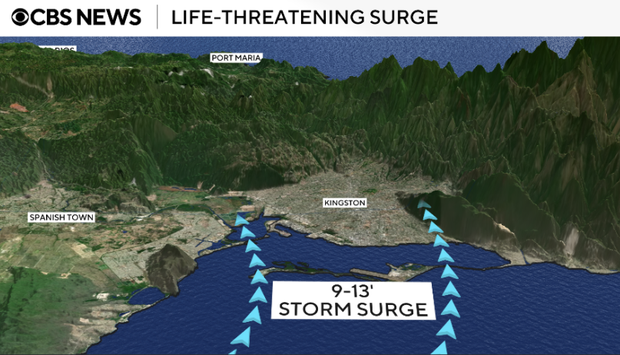Melissa strengthened rapidly into a Category 4 hurricane on Sunday and was forecast to bring “life-threatening and catastrophic” flash flooding and landslides to Jamaica and the southern parts of Haiti and the Dominican Republic over the next few days, the Miami-based National Hurricane Center warned.
Hurricane Melissa, the 13th named storm of the Atlantic season, isn’t expected to have major impacts on the mainland United States, but it could be the strongest system this season.
Melissa’s forecast and path
As of late afternoon on Sunday, Melissa’s core was about 115 miles south-southwest of Kingston, Jamaica, and about 290 miles south-southwest of Guantanamo, Cuba, the hurricane center said. Maximum sustained winds were 145 mph, with hurricane-force winds extending some 30 miles from the storm’s center and tropical storm-force winds extending 205 miles. It was inching west at 5 mph.
CBS News
Melissa is now considered a major hurricane, which is defined as a Category 3 or higher, having winds of at least 111 mph. It was forecast to remain a major hurricane when it makes landfall in Jamaica later this week, the hurricane center said.
It was forecast to move near or over Jamaica during the weekend through Tuesday, across southeastern Cuba by Tuesday night and then across the southeastern Bahamas by the middle of the week. When Melissa makes landfall, peak storm surge accompanied by destructive waves could reach 9 to 13 feet above ground level, according to the NHC.
CBS News
Melissa could be the most powerful hurricane to hit Jamaica, CBS News Philadelphia meteorologist Andrew Kozak said Saturday.
“The island’s terrain makes it even worse,” Kozak said. “Jamaica’s mountains force the air to rise, and that creates more rain.”
The strongest hurricane to hit Jamaica was Gilbert in 1988, Kozak said, which killed 45 people and caused more than $700 million in damage.
Jamaica, Haiti and eastern Cuba should brace for “catastrophic rainfall, up to nearly 3 feet of rain,” CBS News weather anchor Lonnie Quinn said Friday. “Mountainous terrain — there’s going to be mudslides. I am fearful for what we will find by the time we get into next week for this portion of the Caribbean.”
On top of that, he warned, the storm could be packing 140-mile-per-hour winds.
“Jamaica, I think, is going to take the worst of it,” Quinn said.
NOAA/NESDIS/STAR
Hurricane advisories
A hurricane warning was in effect for Jamaica. A hurricane watch and a tropical storm warning were in effect for the southwestern peninsula of Haiti, from the border with the Dominican Republic to Port-au-Prince.
A hurricane warning was also in effect for the Cuban provinces of Granma, Santiago de Cuba, Guantanamo and Holguin. The government of Cuba has also issued a tropical storm warning for the Cuban province of Las Tunas.
The Naval Station Guantanamo Bay said it has been moving “non-mission-essential” U.S. citizens off the island in groups ahead of severe weather from Melissa. They will all be evacuated no later than Sunday morning, the station said on social media.
“Each individual will be allowed one 40-pound bag and a carry-on item,” the station’s Facebook post said. “Stand by for more directions on when your zone will be called to the Windjammer to get orders.”
CBS News
Rainfall forecasts
Melissa is expected to drop up to 30 inches of rain on parts of southern Haiti, the southern Dominican Republic and Jamaica through Tuesday, with higher amounts possible in some areas, the hurricane center said. Eastern Cuba could see up to 18 inches of rain.
“Catastrophic flash flooding and landslides are probable across portions of southern Hispaniola and Jamaica,” forecasters said. Hispaniola is an island that includes Haiti and the Dominican Republic.
Additional heavy rainfall is likely beyond Tuesday, the hurricane center said, but uncertainty remains about the more extended forecast.








